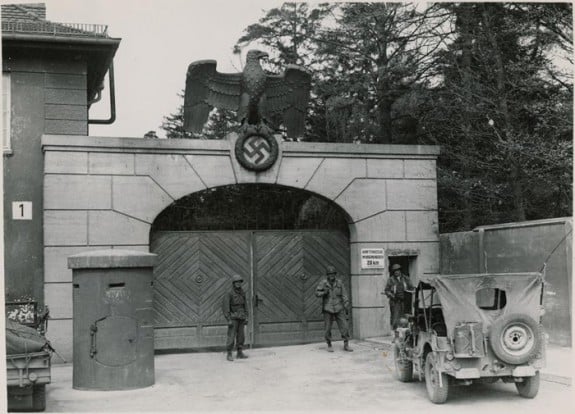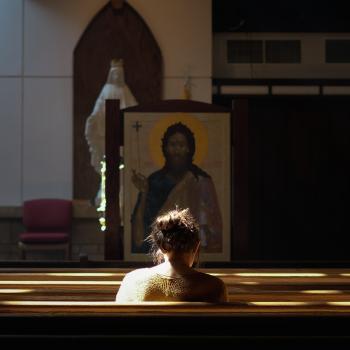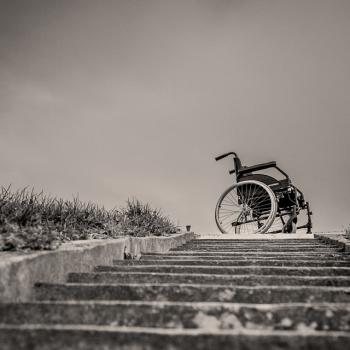Dachau entrance, 1945, from National Archives / Wikipedia
Lest we forget:
Seventy years ago today, the concentration camp at Auschwitz-Birkenau was liberated. Many countries mark this date as Holocaust Memorial Day.
My blog neighbors Kathy Schiffer, Diane von Glahn and Marge Fenelon have written poignantly about this singular moment, with Marge noting the special connection of Catholic priests to another notorious camp, Dachau:
Priests. seminarians, and lay brothers were sent to Dachau, where the Nazis held their most hated political enemies. They were starved, beaten, physically and mentally tortured, underwent medical experimentation, and worked near to death (or all the way to death). The number of lay brothers and seminarians is uncertain, but it’s known that 2,579 priests were sent and 1,034 of them died.
[It’s important to note that thousands of Catholic priests died in other concentration camps as well – Auschwitz, Sachsenhausen, Mauthausen, and Buchenwald.]
It surprises and saddens me that so few people know about this, not even the tour guide at Yad Vashem who led us through the Jewish Holocaust Museum when I was there in May, 2014! She was an excellent guide, truly, and I really liked her. But as she showed us the artifacts and told us about the various concentration camps, I noticed that she didn’t mention Dachau, so I asked her about it.
“Dachau?” she said. “Dachau is nothing. That’s just where they kept some political prisoners.”
I have to admit that I got a bit (more than a bit) irritated by this. I explained to her about the priests – how they were brutalized, starved, experimented upon and how more than a thousand of them died.
You’ll want to read it all. It reminded me of something many deacons should know—and something I mentioned in a homily on the diaconate five years ago:
During the Third Reich over 2,000 Catholic priests were held at Dachau. One out of every 25 deaths there, in fact, was a priest.
The priest prisoners were kept in cellblock 26, known as “Der Priesterblock.” For the imprisoned priests, this experience was transformative. While in Der Priesterblock, many of them began talking about how to renew the Church when the war was over. How could the Church better serve the world? One answer, they felt, would include bringing back an ancient order of service, the diaconate.
After the camp was liberated, the priests who survived returned to a Europe in ruins – a world desperately in need of evangelization, just as in the first century. Some of the priests formed what they called Deacon Circles of clergy and laity – circles of prayer, and service and charity. By the early 1960s, some of those priests from Dachau had become bishops. They attended the Second Vatican Council.
And the rest, of course, is history.
And so it was that the modern diaconate took root and grew – from seeds watered with the blood of martyrs of the 20th century, the martyrs of Dachau.
There’s more at the link.
What happened in those camps is one of the great shames of human history. Years ago, I remember my father telling me about his experience as a soldier liberating the camps. “The Jews threw their arms around us and cried,” he said. “They just cried.”
Whisper a prayer tonight for all those who were lost, and all those who fought and died to save them.
Remembering it over and over, my soul is downcast. But this I will call to mind; therefore I will hope:
The Lord’s acts of mercy are not exhausted, his compassion is not spent;
They are renewed each morning—great is your faithfulness!
The Lord is my portion, I tell myself, therefore I will hope in him…
— Lamentations












